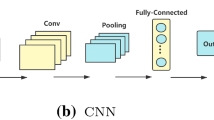Abstract
Through 5G networks, mobile edge computing (MEC) brings the power of cloud computing, storage, and analysis closer to the end user. Innovative inventions in the domain of multimedia and others such as connected cars, large-scale IoT, video streaming, and industry robotics are made possible by improved speeds and reduced delays. On the other hand, in mobile edge computing, machine learning (ML) is leveraged to predict demand changes based on cultural events, natural disasters, or daily travel patterns, and it prepares the network by automatically scaling up network resources as required. Mobile edge computing and ML together allow seamless network management automation to decrease operating costs and boost user experience. In this paper, we discuss the state of art with in mobile edge computing with deep learning to server low-latency, real time application by providing application specific resource allocation. The experimental results have indicated significant amount of improvement in respond time while executing in low latency.












Similar content being viewed by others
Explore related subjects
Discover the latest articles and news from researchers in related subjects, suggested using machine learning.References
Butler B (2017) What is edge computing and how it’s changing the network. Network World, Accessed: 21 July 2019
Chen Y, Wu A, Bayoumi MA, Koushanfar F (2013) Editorial low-power, intelligent, and secure solutions for realization of internet of things. IEEE J Emerg Select Topics Circ Syst 3(1):1–4
Converting Trained Model to TFLite Model https://www.tensorflow.org/lite/guide/get_started
Habibzadeh M, Jannesari M, Rezaei Z, Baharvand H, Totonchi M (2018) Automatic white blood cell classification using pre-trained deep learning models: Resnet and inception. In: Tenth international conference on machine vision (ICMV 2017), vol 10696. International Society for Optics and Photonics, p 1069612
He K, Zhang X, Ren S, Sun J (2016) Deep residual learning for image recognition. In: Proceedings of the IEEE conference on computer vision and pattern recognition, pp 770–778
Iorga M, Feldman LB, Barton R, Martin M, Goren NS, Mahmoudi C (2018) Fog computing conceptual model. https://doi.org/10.6028/NIST.SP.500-325. Special Publication (NIST SP) - 500-325
Li W, Xu H, Li H, Yang Y, Sharma PK, Wang J, Singh S (2019) Complexity and algorithms for superposed data uploading problem in networks with smart devices. IEEE Int Things J 7(7):5882–5891
Mahdavinejad MS, Rezvan M, Barekatain M, Adibi P, Barnaghi P, Sheth AP (2018) Machine learning for internet of things data analysis: a survey. Digit Commun Netw 4(3):161–175
Manyika J, Chui M, Bisson P, Woetzel J, Dobbs R, Bughin J, Aharon D (2015) The internet of things: mapping the value behind the hype. Technical report, McKinsey and Company, 6
McClellan M, Cervelló-Pastor C, Sallent S (2020) Deep learning at the mobile edge: opportunities for 5G networks. Appl Sci 10.14:4735
Quattoni A, Collins M, Darrell T (2014) Transfer learning for image classification with sparse prototype representations. In: 2008 IEEE conference on computer vision and pattern recognition 2008 Jun pp 1–8. IEEE. Processing Systems 27 (NIPS ’14), NIPS Foundation
Ren S, et al. (2016) Faster r-cnn: towards real-time object detection with region proposal networks. IEEE Trans Pattern Anal Mach Intell 39.6:1137–1149
Rothe R, Timofte R, Gool LV (2015) DEX: deep EXpectation of apparent age from a single image. In: 2015 IEEE International conference on computer vision workshop (ICCVW), pp 252–257
Simonyan K, Zisserman A (2014) Very deep convolutional networks for large-scale image recognition. arXiv:1409.1556
Singh S, Jeong YS, Park JH (2016) A survey on cloud computing security: issues, threats, and solutions. J Netw Comput Appl 75:200–222
Singh S, Ra IH, Meng W, Kaur M, Cho GH (2019) SH-BlockCC: a secure and efficient Internet of things smart home architecture based on cloud computing and blockchain technology. Int J Distrib Sensor Netw 15(4):1550147719844159
Wichrowska O, Maheswaranathan N, Hoffman MW, Colmenarejo SG, Denil M, de Freitas N, Sohl-Dickstein J (2017) Learned optimizers that scale and generalize. In: Proceedings of the 34th international conference on machine learning. JMLR.org., vol 70, pp 3751–3760
Wood L (2019) 5G optimization: mobile edge computing, APIs, and network slicing 2019–2024; technical report for research and markets: Dublin, Ireland, 22 October
Yosinski J, Clune J, Bengio Y, Lipson H (2014) How transferable are features in deep neural networks? arXiv:1411.1792
Acknowledgements
On a grateful note, we want to acknowledge our sincere thanks to Dr. Pulak Konar, Associate Professor, Department of Mathematics, The ICFAI University, Tripura (Kamalghat, Mohanpur, West Tripura, India) for his association with this manuscript with useful discussion, valuable contribution and for constant support.
Funding
This research received no specific grant from any funding agency in the public, commercial or not-for-profit sector.
Author information
Authors and Affiliations
Corresponding author
Ethics declarations
Conflict of Interests
The authors declare that they have no conflicts of interest to report regarding the present study.
Additional information
Publisher’s note
Springer Nature remains neutral with regard to jurisdictional claims in published maps and institutional affiliations.
Rights and permissions
Springer Nature or its licensor holds exclusive rights to this article under a publishing agreement with the author(s) or other rightsholder(s); author self-archiving of the accepted manuscript version of this article is solely governed by the terms of such publishing agreement and applicable law.
About this article
Cite this article
Mukherje, D., Anand, A. On edge deep learning implementation: approach to achieve 5G. Multimed Tools Appl 82, 12229–12243 (2023). https://doi.org/10.1007/s11042-022-13712-3
Received:
Revised:
Accepted:
Published:
Issue Date:
DOI: https://doi.org/10.1007/s11042-022-13712-3




